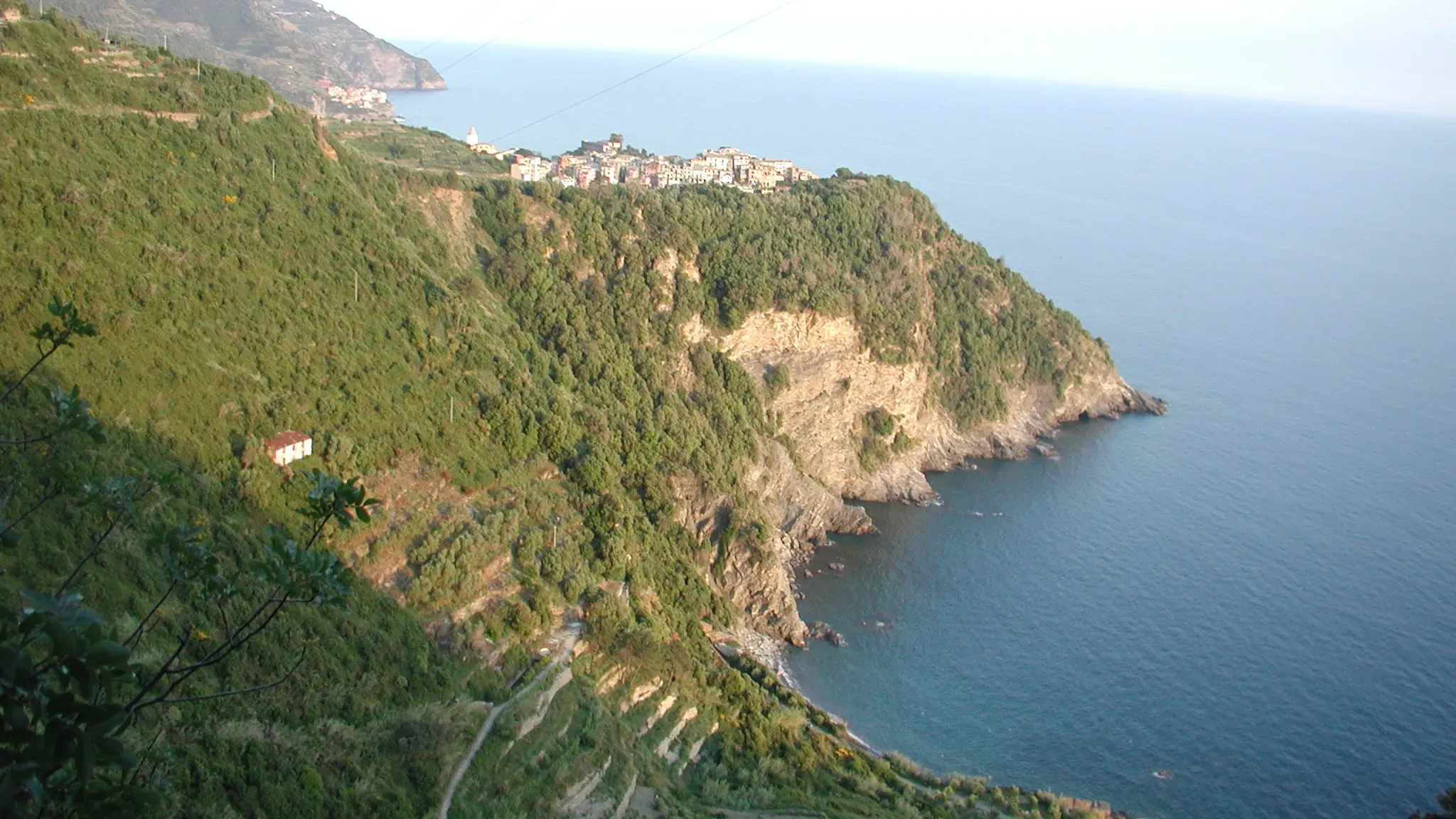Cinqueterre – Mediterranean nirvana

2004 June
We rose early, enjoyed a quick breakfast, and carried our bags to Milan Central Station, where we purchased tickets for our next destination—Cinque Terre. This term refers to five small villages (Corniglia, Manarola, Monterosso al Mare, Riomaggiore, and Vernazza) clinging to the rugged mountains along the Mediterranean coastline, offering breathtaking views.
This UNESCO heritage site is not situated on the main train line or motorway connecting Milan to Rome. To reach it, one must cross the mountains to the western side of Italy, changing trains at Genoa, renowned for its pesto sauce and being the birthplace of Columbus. The western side of the Liguria hills receives optimal sunlight, ideal for tomatoes and basil. Although we could only catch a glimpse from the train, the change from the main line to the local line provided a brief view.
Special trains run from Levanto to La Spezia, stopping at these five villages. These small villages remain remote and haven’t yet transformed into mini-towns, preserving their charm.
Due to the high cost of hotels in these villages, we opted for Levanto, a small village north of Cinque Terre with a sandy beach and bustling daytime markets. Later, exchanging travel notes with friends, we discovered that Levanto was a superior choice in terms of food, spacious rooms, and, most importantly, price and service.
After checking into the hotel in the afternoon, we hurried back to the rail station to head towards the southernmost station, Riomaggiore. We obtained a one-day “Cinque Terre Card” allowing us to hike and use public transport within Cinque Terre. This small fee contributes to maintaining this National Park.
The best way to explore Cinque Terre is by hiking the trails between the five villages, which also connect vineyards and the sea. Alternatively, public transport or ferries are available to hop between villages.
Our plan was to hike from south to north in one go, covering the 12 km distance between Riomaggiore and Monterosso al Mare. Much of the trail is steep and rocky. The hike commenced with steep stairs leading to the famous Via dell’Amore (Path of Love). The walk from Riomaggiore to Manarola, the easiest section, takes about 15-20 minutes, depending on how long you stop to gaze at the view. This stretch is paved and fairly flat.
The subsequent section, from Manarola to Corniglia (3 km and approximately 1 hour), is partly easy but steeper at times, with uneven ground. The most strenuous part is at the end, arriving at Corniglia train station, where signs also lead to secluded or public beaches along the way, requiring a descent to the sea. The station is by the seaside, while the town of Corniglia is atop the hill, connected by a long flight of stairs.
The stretch between Corniglia and Vernazza is the most scenic, passing through vineyards, fragrant herb bushes, and rocky outcrops with spectacular views. Although it took about 1.5 hours to complete, we frequently stopped to admire the views and catch our breath.
The toughest section is between Vernazza and Monterosso, featuring lots of ups and downs and steep stairs. It is a true bridle path unwinding itself by the seaside. We returned to Levanto by train, surrounded by sunburned tourists.
Tip: Wear a good pair of shoes to avoid weary legs, and a hiking pole will save your knees. We hiked this section in the late afternoon due to time constraints, but I recommend starting in the morning to take more frequent stops, admire the beauty, and give your legs and lungs a rest.
In the end, we found ourselves almost running, unprepared for hiking in the dark, being the only ones on that trail. If interested, you can spend a few days in these villages to unwind, explore churches, and visit other historic buildings.
About the Author

Pamela
View all posts →

